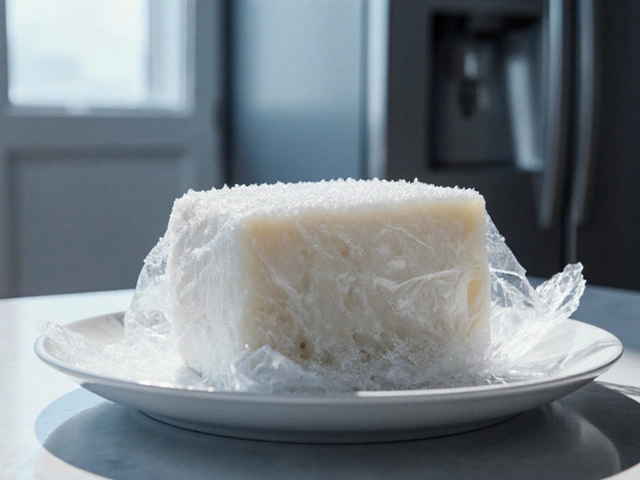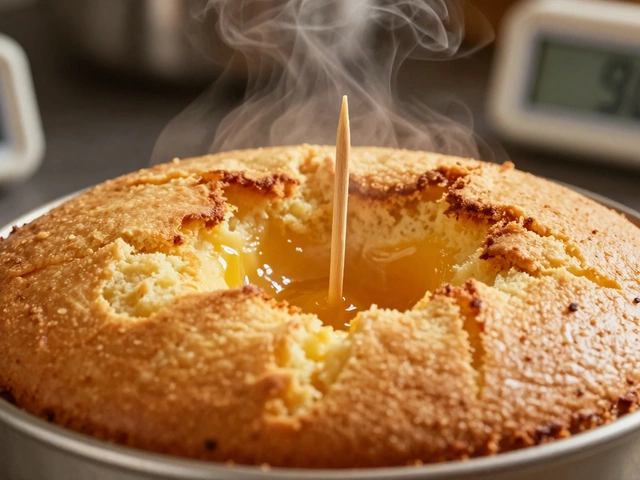We've all been there: you bite into what you hope is a dreamy piece of fudge, only to be met with a gritty texture. So, what gives? The culprit is sugar crystals, but don't worry; once you get the hang of it, preventing grainy fudge is easy-peasy. At the heart of the issue is sugar crystallization. When sugar crystals form while your fudge is cooling, they cause that unwanted grainy texture that can ruin an otherwise perfect treat.
The key to velvety smooth fudge lies in technique. Start with a clean pot and a reliable thermometer because precision is your best friend. Make sure to dissolve the sugar completely during cooking and avoid stirring as it cools, as this can encourage pesky crystals to form. Trust me, a thermometer isn't just a suggestion—it’s your guide to that perfect soft ball stage between 235°F and 240°F.
Understanding Sugar Science
If you want to make fudge that's smooth like a dream, it helps to get sugar science on your side. Sugar plays the starring role here, especially how it behaves when heated and cooled. Let’s break it down.
The Basics of Sugar Crystallization
As you heat sugar, it dissolves in the liquid until the mixture is saturated. When this hot sugar syrup cools, the sugar starts to form crystals again. The trick is controlling this process. If the sugar crystals spread before the fudge sets, you’ll end up with grainy fudge. So, the goal is to encourage only tiny crystals to form—these are what make for a creamy mouthfeel.
Temperature is Key
You want to cook the sugar to a precise temperature range—between 235°F and 240°F. This soft ball stage is where the magic happens, ensuring the right texture for your fudge. Use a trusty candy thermometer, and you’ll get this just right.
Additives to the Rescue
Adding a small amount of corn syrup, honey, or even cream of tartar can help. These ingredients interfere with sugar clumping together, reducing the chances of large crystals forming. Think of them as your secret weapon against grit.
Interesting Fact About Sugar
Did you know the average American eats about 150 pounds of sugar annually? That’s a lot! It’s crucial to understand how it behaves, especially in sweets like fudge.
So, the next time you're ready to make smooth fudge, remember: understanding sugar is like having a superpower in your candy-making toolkit.
Perfect Cooking Techniques
Getting your fudge just right is more art than science, but there are some techniques that can make all the difference. First off, size matters when choosing your pot. Use a pot with high sides to prevent sugar from splashing and help maintain a consistent temperature. If you're going for a big batch, pick a pot that's big enough!
Stir with Care
Once you've combined your ingredients, it's essential to stir them carefully. During this phase, you're aiming to dissolve the sugar completely. Stir gently, and once everything is smooth, resist the urge to stir constantly. Over-stirring is a common culprit in creating grainy fudge because it encourages sugar crystals to form.
Pay Attention to Temperature
This seems obvious but using a candy thermometer is a game-changer. Your fudge needs to reach the 'soft ball' stage, between 235°F and 240°F. At this point, a small drop of the mixture should form a soft ball in cold water. If you can, grab a digital thermometer for super accuracy—it makes life easier!
Cooling is Key
After reaching the right temperature, take your pot off the heat and let it cool without touching it. Avoid jostling the pan or even thinking about stirring until it hits around 110°F. It usually takes about 30-40 minutes to cool sufficiently.
By following these perfect cooking techniques, you're setting yourself up for a win—smooth, creamy fudge that's a joy to eat. And hey, nobody's perfect at first, so don't fear trial and error. Experience is the best teacher, and soon you'll be whipping up fudge like a pro!

Temperature Matters
When it comes to making fudge, the right temperature can make or break your batch. Seriously, it’s that important. We're talking precision here, folks. Just a few degrees off and you could go from creamy to crumbly real quick.
The Importance of the Soft Ball Stage
If you've ever read a candy recipe, you've probably seen the term 'soft ball stage.' This is when your fudge mixture reaches between 235°F and 240°F. Get it wrong, and your fudge will end up grainy. Why? Because sugar molecules stop playing nice with each other and start forming big crystals.
Now, here's a little tip: invest in a good candy thermometer. It's not just some fancy gadget to show off. It ensures you're heating your sugar mixture to the right temp. A digital one is great because it gives you a precise reading. Trust me, that extra few bucks for accuracy will save your fudge!
Cooling Down Correctly
Once your mixture hits the perfect temperature, you’ve got to cool it down without stirring. Stirring during cooling causes premature crystallization—exactly what we’re trying to avoid. After you remove it from the heat, let it sit undisturbed until it cools to about 110°F.
Check out the simple steps:
- Remove from heat at 235°F to 240°F.
- Let it cool undisturbed to 110°F.
- Then, give it a good beat until it thickens and loses its sheen.
Hey, if you’re like me and love a chart, here’s a quick temp guide to keep nearby while making fudge:
| Stage | Temperature (°F) |
|---|---|
| Soft Ball Stage | 235-240 |
| Cooling Before Beating | 110 |
There you go, the not-so-secret trick to making smoother fudge lies in carefully monitoring that thermometer. Cheers to no more grainy batches!
Rescuing Grainy Fudge
If your fudge turned out grainy, don’t despair; it's not the end of the sugary road. While starting from scratch is always an option, there's a handy trick to bring your grainy fudge back to the smooth side.
The Boil and Blend Method
This method is a lifesaver. Just return your fudge to a clean saucepan with a small amount of water or cream—just a couple of tablespoons will do. Slowly bring it to a boil again while stirring gently to dissolve those stubborn sugar crystals.
- Reboil: Put your grainy fudge back onto low heat. Add a tablespoon of water or cream, and stir lightly to help the crystals dissolve.
- Temperature Control: Use your thermometer again. Heat the mixture back to that sweet spot between 235°F and 240°F.
- Beat the Mixture: Once it reaches the right temperature, let it cool. Once lukewarm, beat it energetically until the gloss disappears. Doing this properly ensures that your fudge will set smoothly.
Remember, patience is key! After cooling, your smooth fudge should be ready to enjoy.
"The secret to fixing grainy fudge is all about understanding sugar. Melting sugar crystals down and then allowing them to form smaller, uniform crystals is what gives fudge its creamy texture," says pastry expert Emma Carter.
Prevention Tips
It's always better to avoid the grainy situation in the first place. Here are some prevention tips:
- Brush Down Sides: Use a wet pastry brush to wipe down sugar crystals on the sides of your pot while cooking.
- Don’t Stir: Once sugar has dissolved and the syrup starts to boil, resist the urge to stir.
- Cool Slowly: Let the mixture cool down before beating, allowing it to reach the right temperature naturally without disturbance.
With these simple remedies and preventive measures, you’ll banish grainy fudge for good. So next time, you can show off your smooth fudge with pride—even if you had to save it first!





